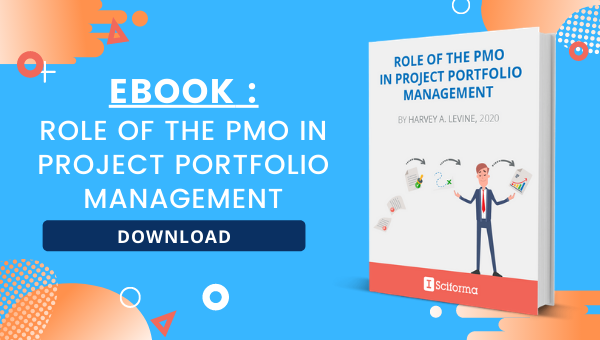For project-focused teams, concise, consistent processes and operations are crucial for successful execution. Many businesses rely on a robust PPM tool to improve day-to-day and task-to-task operations. But what is PPM software, and how can you find the best PPM software solutions for your organization?
There are many tech-centric options to choose from. From Project Management tools and Collaborative Work Management software to enterprise Project Portfolio Management (EPPM) and Strategic Portfolio Management solutions, the sea of options can be overwhelming. Each business is different, so it’s crucial to understand how each of these software types works.
Let’s dive into the differences.
The Differences Between Project Management, Work Management, and Project Portfolio Management Softwares
PM solutions are software created to enable Project Managers and their teams to manage individual projects. They help facilitate the management and completion of a whole array of activities, such as project planning, progress tracking and reporting, and activity monitoring.
How? First, by centralizing and consolidating project-related data to provide Project Managers with a snapshot of project status and health at a given time.
Second, by automating tasks with intelligent software protocols. Planning, scheduling, and tracking tasks can be machine-assisted or fully automated. This saves human workers huge amounts of valuable time while minimizing the risk of error.
Finally, Project Management tools provide standard document, chart, and dashboard templates that help improve consistency from one project to the next.
What is PPM Software, and How Does it Work?
Project Portfolio Management (PPM) software combines the project-oriented capabilities of Project Management tools with the unifying features of collaboration-focused platforms. But it goes much further.
Project Management Offices usually bump up against the limitations of PM tools when heightened activity and complexity require higher-level coordination and consolidation. Project Management software may go a long way toward optimizing the delivery of individual projects, but this type of tool falls short when it comes to coordinating multiple projects with interdependent pieces.
As for collaborative work tools, they may include some basic cross-project resources, budget management features, and program-level analytics capabilities. Still, they’re not optimal for the effective management of entire portfolios.
This is why most Project Management Offices eventually turn to mature PPM solutions. But what is PPM software going to do? A whole lot.
These multi-purpose management platforms offer a powerful database to accommodate all kinds of project-related data and information across an organization. They also provide comprehensive sets of various features to facilitate the management of every step through each phase of a project.
More importantly, they’ll help you perform actual portfolio-level management tasks by helping connect the dots. PPM platforms improve visibility across projects, coordinating dependencies and enabling the holistic management of all project activities.
They also empower PMOs to see and manage each project’s impact on the organization’s strategic performance.
How a PPM Tool Supports Project Selection
The management of project ideas and demands is one of the most critical phases of the PPM process. It’s key to get this right since investing in the wrong projects wastes valuable time and resources.
In that regard, a robust PPM tool with a range of capabilities for managing project ideas and demands can maximize the value and return of project investments.
Idea and demand management
PPM software will consolidate all project ideas and demands across the organization into a single place, putting them side-by-side and using common description formats and scoring systems to help the PMO identify the most promising ones. The evaluation criteria are fully customizable, creating an adaptable system that prioritizes what matters most to your organization.
Portfolio and project ranking
As project demands are centralized, scored, and ranked, with a materialization of possible interdependencies and constraints between them, it becomes much easier for the PMO and other relevant stakeholders to review and select the best proposals. That same objective, fact-based approach can then help prioritize projects, business cases, and valuable initiatives.
Analyzing risk
Importantly, the appraisal of project and portfolio potential value should always include risk considerations, and a PPM tool can support that as well.
Risk management features highlight potential risks associated with project proposals or business cases from the outset. They also make it easy to reevaluate them throughout the execution, refinement, and delivery phases.
For Project Managers and PMO teams, this enables effective risk prevention and mitigation strategies. Risk assessment and management can also happen at the portfolio level to optimize the overall risk profile.
Providing end-to-end connections
A good Project Portfolio Management solution should create connections between ideas, business cases, and projects, giving you a comprehensive picture of the portfolio’s health.
PPM tools also make it possible to re-assess and re-prioritize active projects during the execution phase to reflect any change in the market landscape, strategic objectives, or organizational circumstances. In a pinch, they make it easier to correct course and adapt to unexpected events.
PPM Software Supports Planning, Tracking, and Reporting Activity
PPM software provides PMOs with a centralized platform to plan and execute projects while considering their interrelations.
Proper planning and scheduling enable PMOs to establish a sound foundation for their projects. Smart PPM tools include planning features that can recommend the best option, taking into account lessons learned from past projects and resource capacity forecasts.
The goal of the best PPM software programs is to provide Project and Portfolio Managers with comprehensive visibility of the whole project pipeline. This assists in the establishment of realistic and reliable roadmaps, preventing conflicts and bottlenecks across projects, portfolios, and programs.
PPM software also plays a key role in monitoring progress throughout the various phases of projects, with real-time updates on project health and status. It also provides valuable insights to help understand, analyze, and manage the course of execution.
When project professionals know whether their initiatives are on track for successful completion, they can focus their efforts on those specific projects that require special effort and action.
Finally, a PPM tool offers consolidated dashboard and report templates that allow PMOs to provide executive managers with high-level summaries of project activity progress, along with KPIs and key strategic metrics, to better connect the data to the business’s priorities.
Optimizing Resource Allocation and Utilization With Powerful Software Solutions
The PPM software platforms come with features and capabilities dedicated to improving the management of human resources.
Such functionalities enable both Project Managers and Resource Managers to better distribute, allocate, and assign the resources that are available to them in order to create maximum value at the portfolio level.
With all resource information stored in the platform, it offers the ability to sort and filter by attributes (role, competencies and skills, cost center, and more) for at-a-glance views of planned assignments and available resources.
Thanks to that consolidated view, decision-makers can match appropriate resources with the proper tasks and projects, aligning them with portfolio priorities. PPM capabilities also detect over- and under-assignment of key resources, allowing Resource Managers to take corrective action and ensure the best possible resource utilization.
The ability to track costs and expenses against budget baselines in real time, anticipate overruns before they occur, take preventive action, and readjust when needed makes it possible to build and maintain financially healthy portfolios of projects.
Because a PPM platform helps analyze and calculate the potential ROI and value of both individual projects and portfolios, the PMO guarantees that the distribution of funds across projects and initiatives maximizes value for the business.
Facilitating Communication and Collaboration With Team-Oriented Software Features
Like the collaborative work management platforms described above, Project Portfolio Management software provides communication channels that help project teams and stakeholders collaborate effectively.
Shared workspaces and social features allow project managers and team members to share comments, notes, and reminders on work items, opening the door for seamless collaboration.
This not only saves significant time by reducing the number of unnecessary meetings, email threads, and chances for miscommunication—it enhances the ability of teams to communicate and collaborate, improving the quality and relevance of interactions. It’s all about empowering people to engage in collective ideation and collaborative problem-solving — in other words, tapping into collective intelligence.
In a nutshell, Project Portfolio Management tools offer a full stack of capabilities that enable the Project Management Office and project teams to enjoy a comprehensive view of all information, processes, and activities in a portfolio, including links and dependencies between projects.
The ultimate goal of such enterprise-wide systems is to help decision-makers determine where to invest the firm’s time, budget, and resources to maximize return and achieve targeted business goals.
Finally, state-of-the-art Project Portfolio Management software can be interfaced with other enterprise systems (ERPs, for example) in order to facilitate data collection and aggregation.
Best Practices to Make the Most of a PPM Tool
Here are some tips that will help ensure you get the greatest value from your PPM solutions.
Pick the best PPM tool for your organization.
The solution you choose should match the specific challenges of your PMO and provide core capabilities that align with your most pressing PPM and business needs. Consider the areas where your team needs the most support, common causes of delays, and typical project bottlenecks. This will help you narrow down the best potential solutions.
Consider establishing a Project Management Office.
If you don’t already have one, consider setting up a Project Management Office to consolidate and standardize the management of projects and portfolios. With a bird’s eye view of project-related activities and a solid understanding of the business strategy and priorities, a PMO will be of tremendous help to optimize portfolio-level management with the support of your new PPM tool.
Create a solid change management strategy.
The introduction of a Project Portfolio Management tool into your company can disrupt, to some extent, the daily work of teams. Make sure that Project Managers, team members, and any stakeholders involved have easy access to support and resources in order to ease the transition. This will facilitate and speed up the adoption of your new tool while empowering your people to use it as effectively as possible.
Evolve and grow your PPM tool over time.
Activate new functionality to match the development of PPM maturity across the business to optimize new areas. Expand the use of your tool to new departments and units as needed. For that, it’s essential to select a scalable and flexible PPM platform that will be able to support you as you grow.
Selecting the Best PPM Software: Choose a PPM Partner That Works for You
Project Portfolio Management software brings portfolio managers and PMOs everything they need to optimize management strategies and maximize the value of portfolios and projects alike. While Project Management tools assist in doing the projects right, the best PPM software solutions go the extra mile and offer to help you do the right projects—and do them right.
Sciforma Vantage is an adaptable, scalable collection of powerful PPM tools. Go beyond project management with strategic portfolio insights and collaborative features that empower your teams to do and deliver their best. Schedule a demo to discover the difference that Sciforma can make.
More about Project Portfolio Management (PPM) software and how it works:
- How to implement PPM processes
- PPM Best Practices: 5 essentials you need to know
- How does PPM software work?








Isabelle Bouscatie
With many years as a EMEA Marketing Manager under her belt, Isabelle is presently in charge of Sciforma’s customer marketing and global events. She thrives in Sciforma’s dynamic, fast-paced digital environment and she enjoys working in direct contact with customers, who help her keep abreast of PPM challenges across organizations.